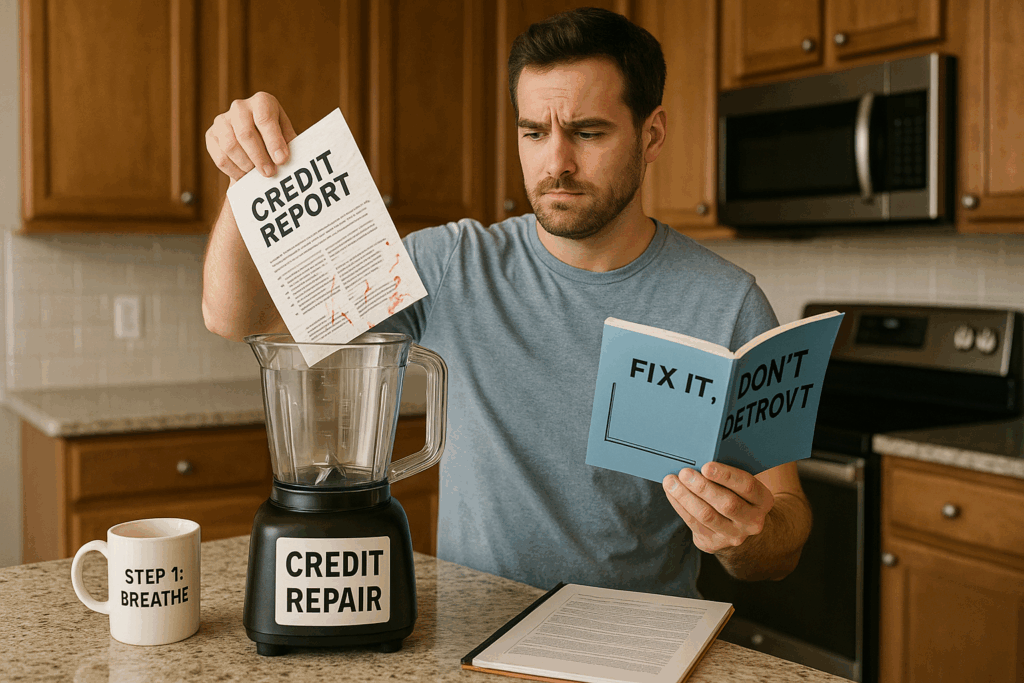Credit Repair 101: What You Need to Know to Get Started

If you’re reading this, chances are your credit score isn’t where you want it to be, and you’re ready to do something about it. First, take a breath. You’re not alone, and the situation is absolutely fixable. Credit repair isn’t magic, but it also isn’t as complicated as some make it out to be. This post breaks it down so you can get started with confidence.
You Don’t Have to Do It Alone
First, we want to let you know that credit repair can be DIY, but you don’t have to go it alone. At CreditNerds.com, we’ve helped thousands of people clean up their reports and rebuild their financial lives. Whether you want support with disputes, help understanding your report, or just someone in your corner, we’ve got your back. Schedule your free consultation at www.CreditNerds.com/Start.
What Is Credit Repair?
Credit repair is the process of identifying and correcting negative or inaccurate information on your credit reports that may be hurting your score. It’s not about “hacking the system” or “tricking” the credit bureaus. It’s about making sure your credit report tells the truth and gives you a fair shot.
Why Your Credit Score Matters
Your credit score affects more than just loan approvals. It can impact:
- Your interest rates (higher score = lower rates)
- Whether you get approved for a home or apartment
- Car insurance premiums
- Job opportunities (yes, some employers check credit)
A bad score isn’t just a number; it’s a barrier. But credit repair helps break it down.
Step 1: Get Your Credit Reports
Start by requesting your credit reports from the three major credit bureaus: Equifax, Experian, and TransUnion.
Once you have them, review each report carefully. You’re looking for:
- Incorrect personal info
- Accounts you don’t recognize
- Duplicate accounts
- Late payments that weren’t actually late
- Collections that should have been removed
- Outdated negative items (like bankruptcies older than 10 years)
Step 2: Dispute Inaccuracies
If you find errors, you have the legal right to dispute them. You can:
- File disputes online with each bureau
- Mail written disputes with documentation
- Or use a reputable credit repair service to handle it for you
Under the Fair Credit Reporting Act (FCRA), bureaus must investigate disputes within 30 days. If you would like more information, check out our blog on How to Dispute Credit Report Information.
Step 3: Handle Legitimate Debt Strategically
Not everything negative can be removed. But you can still improve your credit by:
- Paying down credit card balances
- Bringing accounts current
- Asking for goodwill adjustments from creditors
- Settling old debts (when appropriate)
- Avoiding new late payments
Remember, your score isn’t just about what’s wrong. Tt’s also about what’s right. Positive behavior over time makes a difference.
Step 4: Monitor and Maintain
Once you start cleaning things up, don’t stop there. Use a credit monitoring tool (preferably one that shows all three bureaus) to keep an eye on changes. Set up reminders to pay bills on time and avoid maxing out credit cards.
A Quick Note on Scams
Be cautious of any company that promises results “overnight” or guarantees a specific score. Real credit repair takes time, transparency, and a focus on what’s legally allowed.
We understand how scary it can look, but you’re not alone! Learn more about our program at www.CreditNerds.com/FAQ, and discover how we can help.

